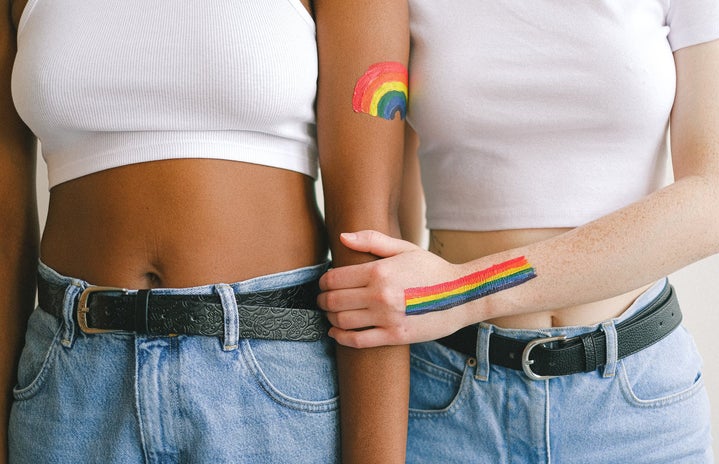shedding light on asexuality and aromanticism
Aromanticism and asexuality are lesser-known orientations a part of the LGBTQIA+ community. Aromantic means that a person experiences little to no romantic attraction. Asexual, on the other hand, describes someone who experiences little or no sexual attraction. Individuals who identify as asexual often identify themselves as “ace,” while those who identify as aromantic refer to themselves as “aro.” These two orientations may confuse many or seem strange, but it’s absolutely possible not to experience romantic and/or sexual attraction. I’m here to say that this community does exist and is completely valid.
Due to most people being allosexual or alloromantic, which means that they’re interested in pursuing sexual or romantic relationships, the aromantic and asexual community is rarely talked about. Only 1 percent of the world identifies as asexual, and aromanticism is even less common. Just like every other sexuality and orientation, there’s a large spectrum when it comes to asexuality and aromanticism. An individual can be placed anywhere on these spectra and even have different combinations of romantic orientation and sexual orientation. One can be heterosexual and aromantic, biromantic and asexual, homosexual and aromantic, and so on and so forth! I want to bring attention to the word “and” in these orientations. Although they often overlap, there’s a distinct difference between sexual and romantic attraction.
You are now probably thinking: “Why does no one talk about this?” The main reason, my friend, is because of amatonormativity. Society has made us believe that everyone shares the goal of finding a romantic/sexual partner. When, in reality, not wanting to be in a romantic or sexual relationship is normal, too. Romantic and sexual relationships are so prevalent in the media it’s rare to find something that doesn’t show these relationships. Even while watching horror movies, we’re bombarded with random sex scenes, which doesn’t make sense to me as they don’t add to the plot in any way. Meanwhile, ace/aro representation in books, shows and movies is virtually nonexistent.
Erasure is extremely common in the LGBTQIA+ community, particularly when it comes to aromanticism and asexuality. For example, many people believe that the A in LGBTQIA+ means “ally,” which is absolutely wrong. The ‘A’ is actually supposed to represent asexuality, aromanticism and agender. Those who are on either or both of these spectrums are part of the LGBTQIA+ community, and they experience discrimination even if it’s different than gay, trans or bi. This erasure plays a role in the lack of awareness about these orientations, leading many not to realize that they’re ace or aro until later in life.
Aromanticism On valentine’s day
With all of this in mind, you can imagine how hard it is to be aro around Valentine’s Day. A whole day fixated around romantic relationships. I think I’ll pass! As someone who identifies as aroace, Valentine’s Day is a strange concept to me, which I feel like I never truly understand. This day is full of people shoving their relationship in my face or complaining about being single. When people become hyper-fixated on romantic relationships, it honestly makes me extremely uncomfortable. Over the years, I have made my own concept of Valentine’s Day and celebrated it by treating my friends with flowers, chocolate, maybe even dinner to show my appreciation to them. Because why not show everyone you love some appreciation? For me, it became a day to celebrate friendships since our society often puts romantic relationships on a pedestal and makes them seem more important and fulfilling than friendships. Asexual and aromantic people are just as capable of forming strong and loving connections as those who don’t identify with these orientations. I believe that those connections are just as much worth celebrating.


